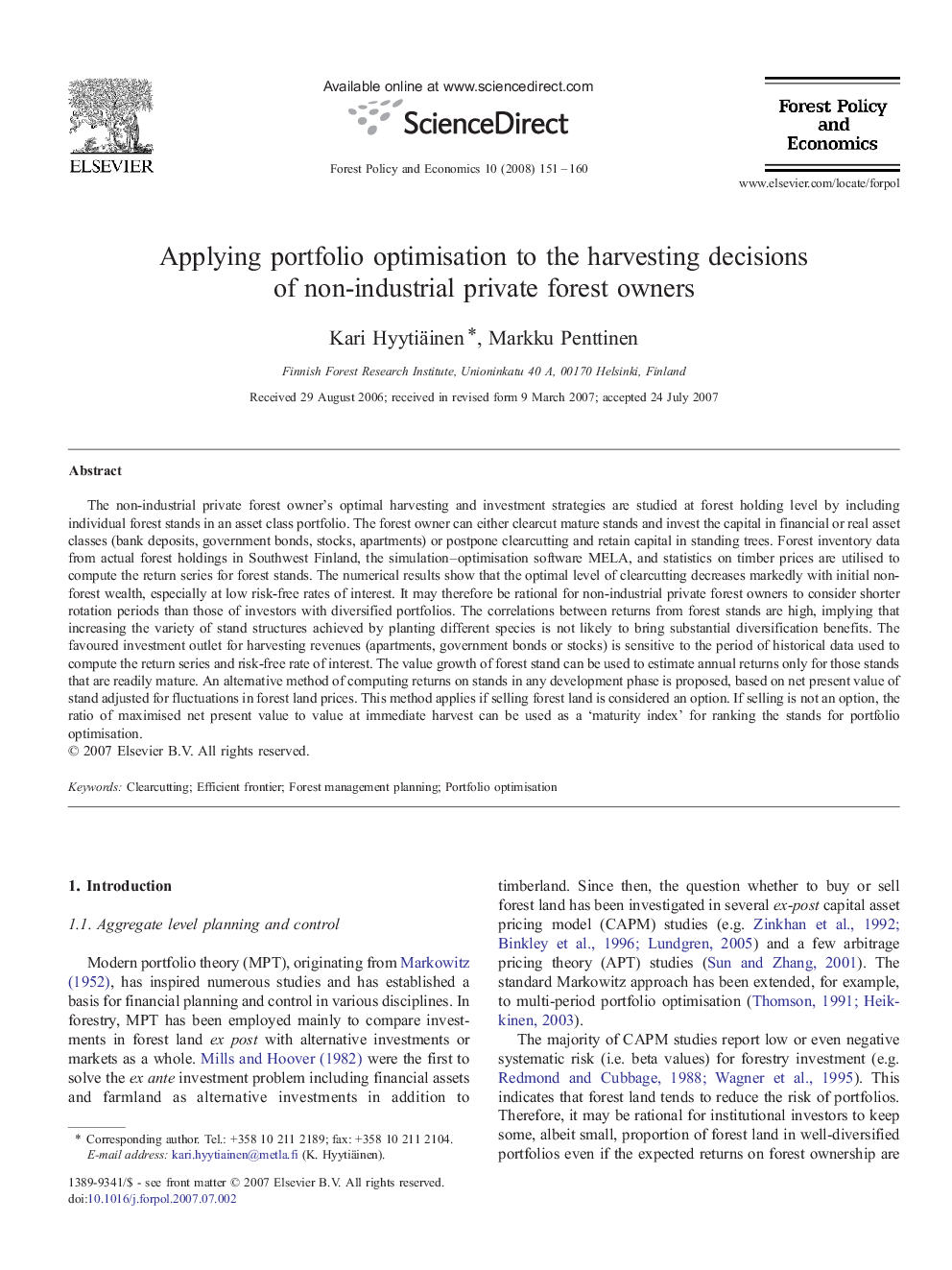| کد مقاله | کد نشریه | سال انتشار | مقاله انگلیسی | نسخه تمام متن |
|---|---|---|---|---|
| 91575 | 159815 | 2008 | 10 صفحه PDF | دانلود رایگان |

The non-industrial private forest owner's optimal harvesting and investment strategies are studied at forest holding level by including individual forest stands in an asset class portfolio. The forest owner can either clearcut mature stands and invest the capital in financial or real asset classes (bank deposits, government bonds, stocks, apartments) or postpone clearcutting and retain capital in standing trees. Forest inventory data from actual forest holdings in Southwest Finland, the simulation–optimisation software MELA, and statistics on timber prices are utilised to compute the return series for forest stands. The numerical results show that the optimal level of clearcutting decreases markedly with initial non-forest wealth, especially at low risk-free rates of interest. It may therefore be rational for non-industrial private forest owners to consider shorter rotation periods than those of investors with diversified portfolios. The correlations between returns from forest stands are high, implying that increasing the variety of stand structures achieved by planting different species is not likely to bring substantial diversification benefits. The favoured investment outlet for harvesting revenues (apartments, government bonds or stocks) is sensitive to the period of historical data used to compute the return series and risk-free rate of interest. The value growth of forest stand can be used to estimate annual returns only for those stands that are readily mature. An alternative method of computing returns on stands in any development phase is proposed, based on net present value of stand adjusted for fluctuations in forest land prices. This method applies if selling forest land is considered an option. If selling is not an option, the ratio of maximised net present value to value at immediate harvest can be used as a ‘maturity index’ for ranking the stands for portfolio optimisation.
Journal: Forest Policy and Economics - Volume 10, Issue 3, January 2008, Pages 151–160